Shipping Logistics Application
Optimizing the process of matching carriers to shipments
Challenge
Research current end user process and create a new solution, designed for speed and information captured, for users in a fast paced environment
- My Role: Lead Designer
- My Team: 1 Product Manager, 10 Engineers
- Client: Shipping Logistics Company
- Business Goal: Replace green screen legacy system with a modern interface to improve productivity, reduce training time, and increase bottom line
- Duration:~6 Months
Project Kick-Off: Research
Persona: Carrier Representatives
Following our workshop gathering basic project requirements, we set off to the client’s office in Pittsburgh for contextual user observation. We talked to three people in depth about their work and responsibilities, digging for pain points and places to optimize.
Findings & Areas of Opportunity
- Each carrier rep had their own “secret” list of carriers (contract truck drivers) they worked with on a regular basis. These leads were not shared among the carrier team, leading to siloed knowledge
- No easy way to record additional carrier capacity
- No visibility into “backhaul opportunities”
- No time to work on building dedicated carrier relationships, as opposed to current model of on-demand carriers on a shipment to shipment basis
Wireframing
The client was unclear on the direction they wanted to take the product, so we created wireframes based off our research to address the pain points we’d heard from end users.
The wireframes were primarily used to experiment with potential solutions and to get buy-in on possible design directions.

Once the scope of the project was clear, we were able to start digging into the details. Priorities were:
- Information density without sacrificing readability
- Surfacing potential carriers based for a shipment based on their location and availability, and ranked by their frequencies in moving shipments for the client
- Surfacing backhaul opportunities to allow carrier representatives more negotiating power with carriers on price
- Ability to capture future carrier capacity, not just whether or not they can take a certain shipment
UI Design
We created fresh UI styles that spoke to the client’s branding, while taking them beyond their current style guide.
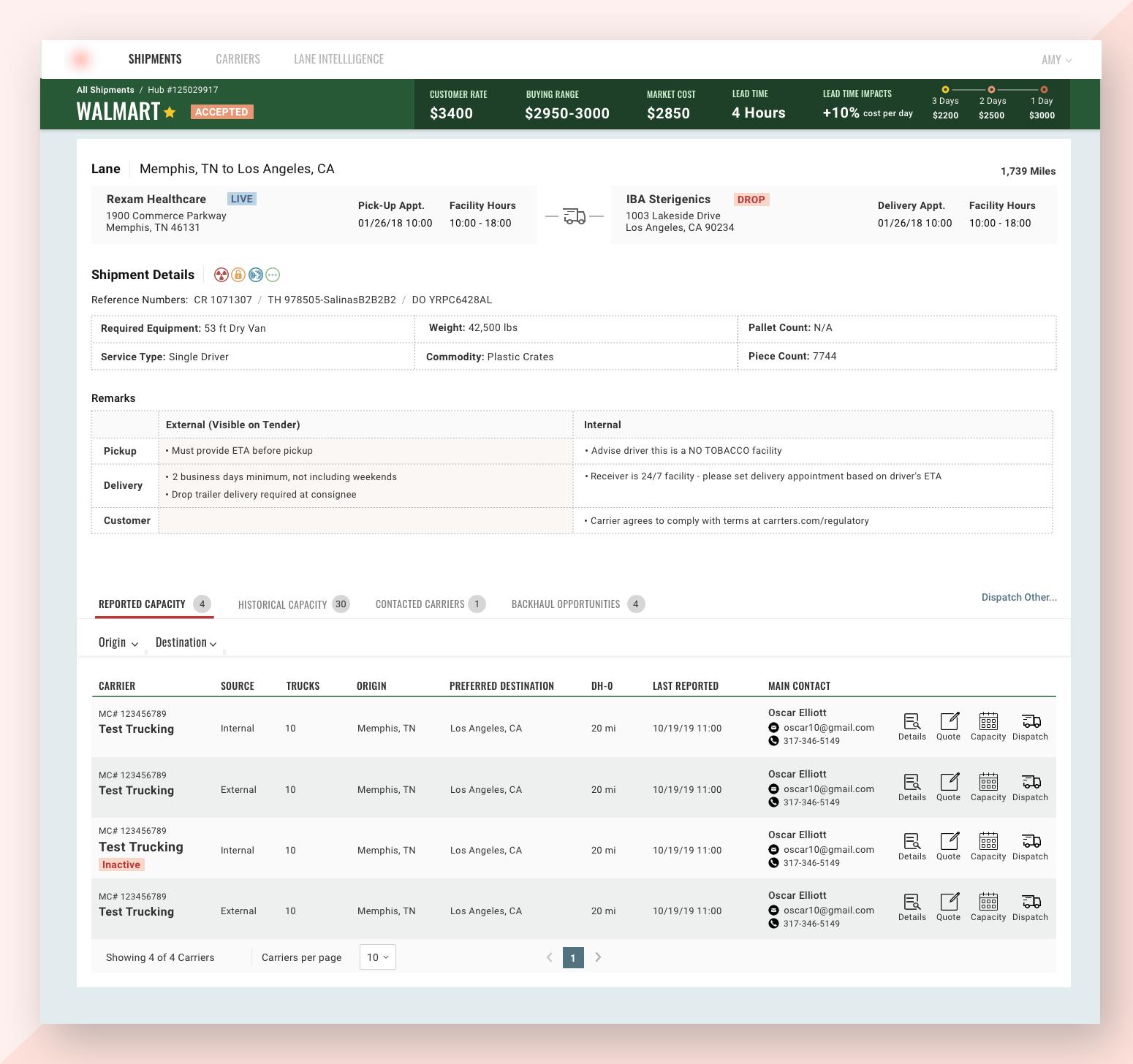
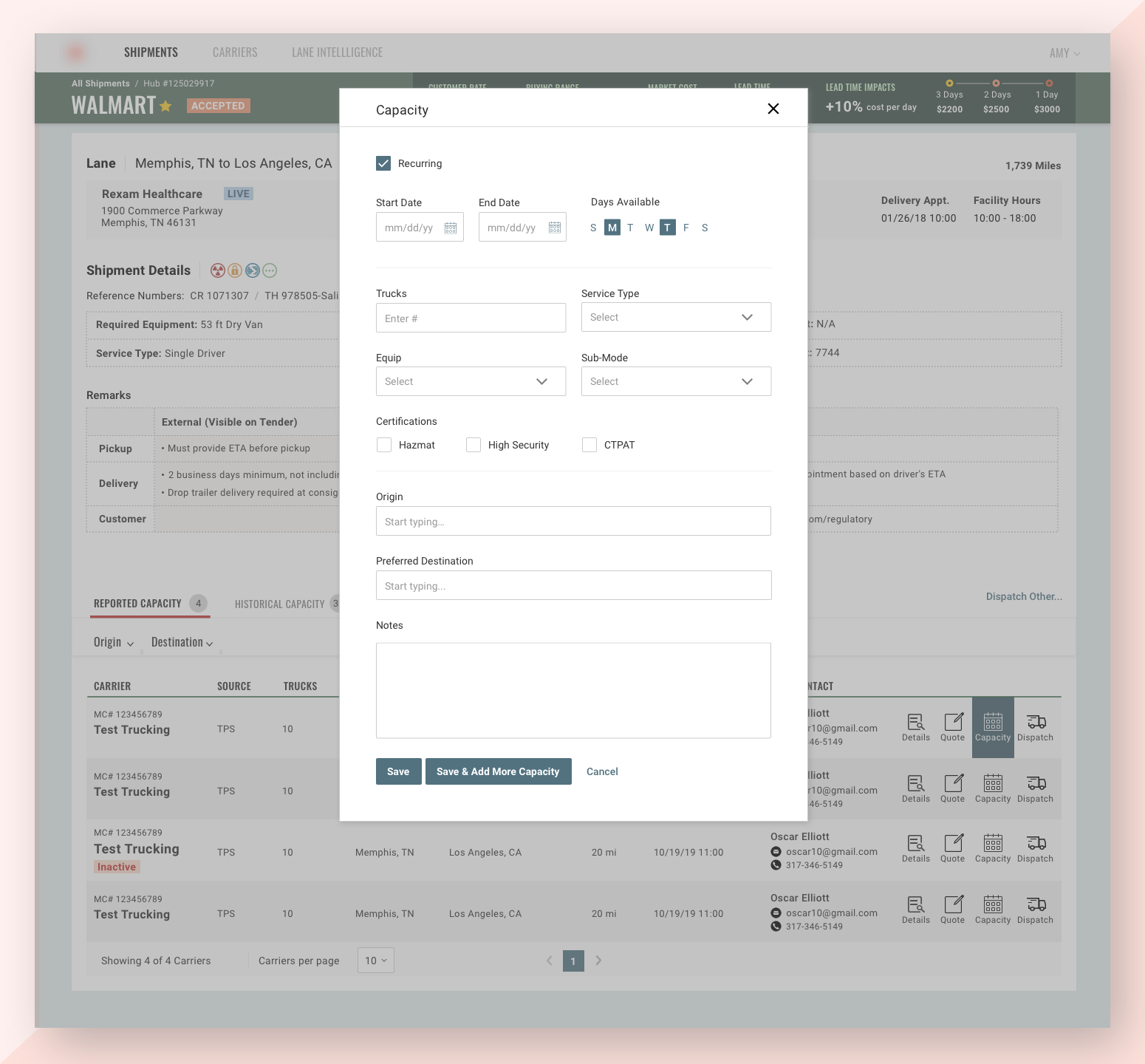
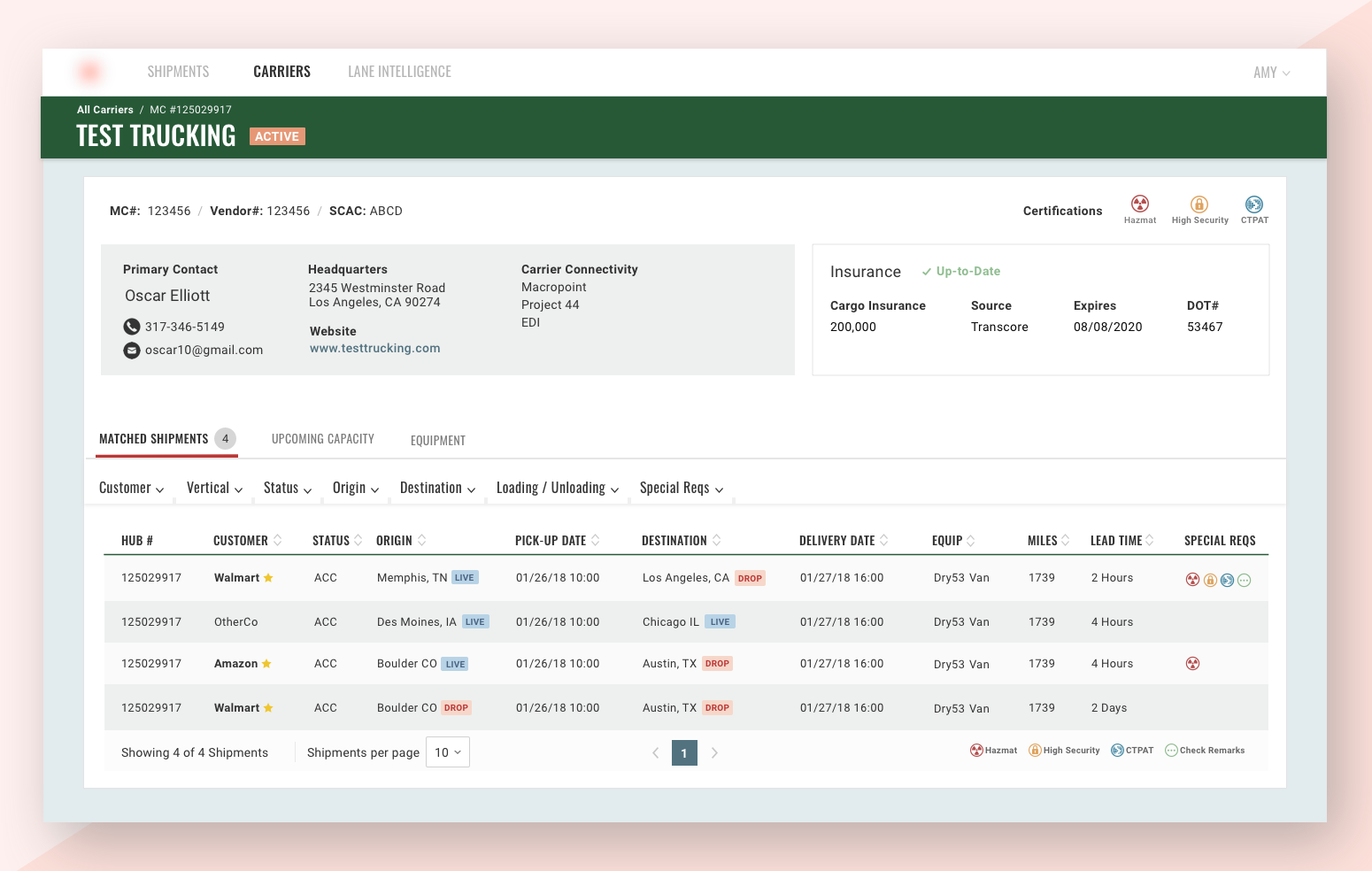
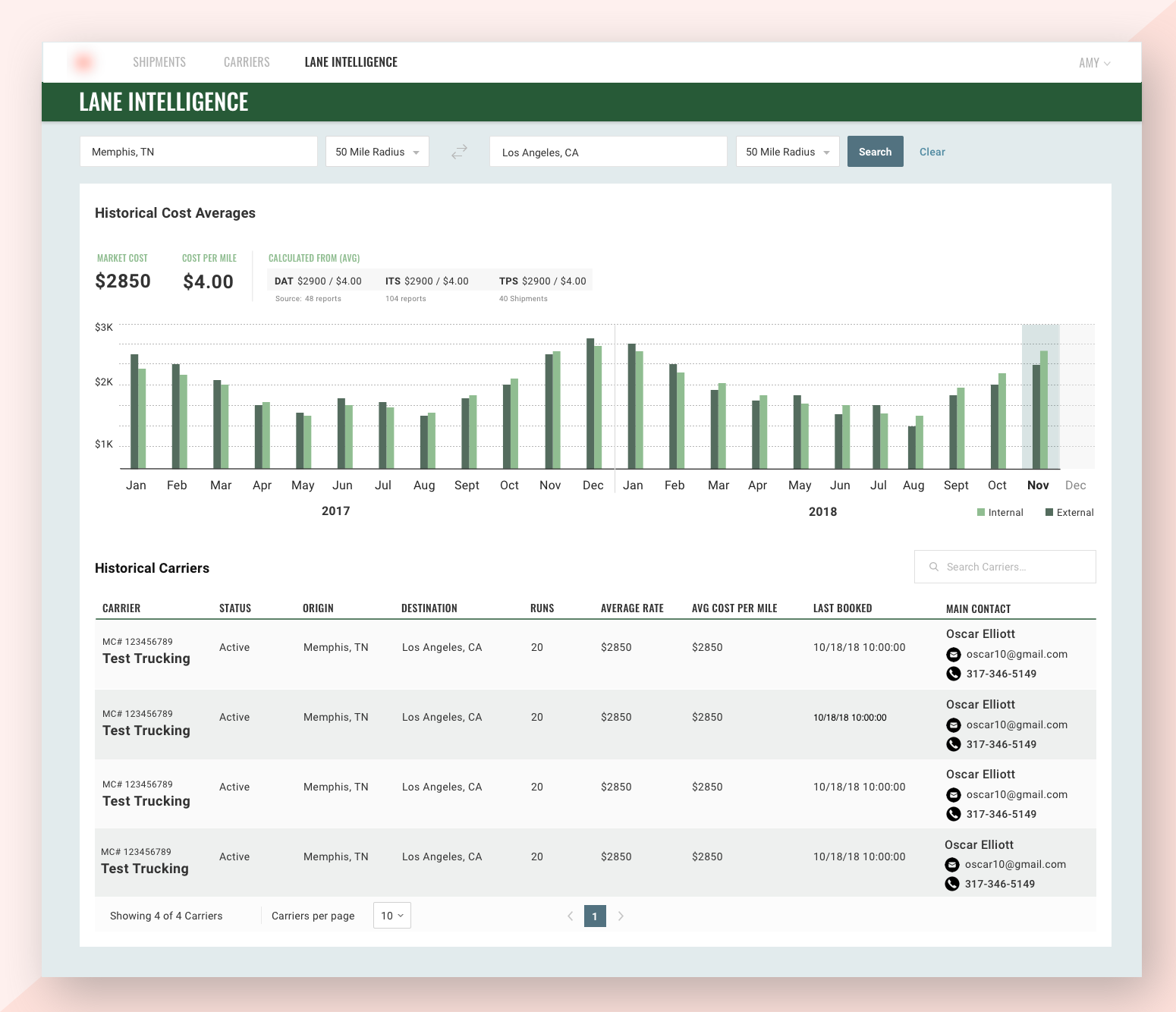
MVP Beta Testing
We visited the client’s other brokerage office in Toledo to do a beta test of the MVP. We worked with three users and observed each of them using the application in at their desk, doing their day-to-day tasks.
In addition to noting the observational feedback, we also had a debrief session with the users at the end of the day, and created a UAT slack channel for anyone using the application to submit bugs, usability issues, and new ideas.
Follow-Up Project: Carrier 4 Week Discovery
Personas: Dispatchers and truckers at carrier companies
Following the completion of MVP, we saw another potential opportunity for the client. We made an initial proposal, and were granted a paid 4 week discovery project to validate or invalidate the concept being proposed. We interviewed seven carriers, including one visit to a carrier’s office. We were able to understand not just their day-to-day tasks, but the different websites they frequented to find shipments. We discovered that while our client was held in high regard for its relationship building, its tech offerings were known to be lacking.
Our research took us beyond our original proposal, allowing us to understand much more fully the problems being faced in the industry and the existing solutions available. By the end of our discovery phase, we had a new concept that we were now confident was the direction our client should pursue.
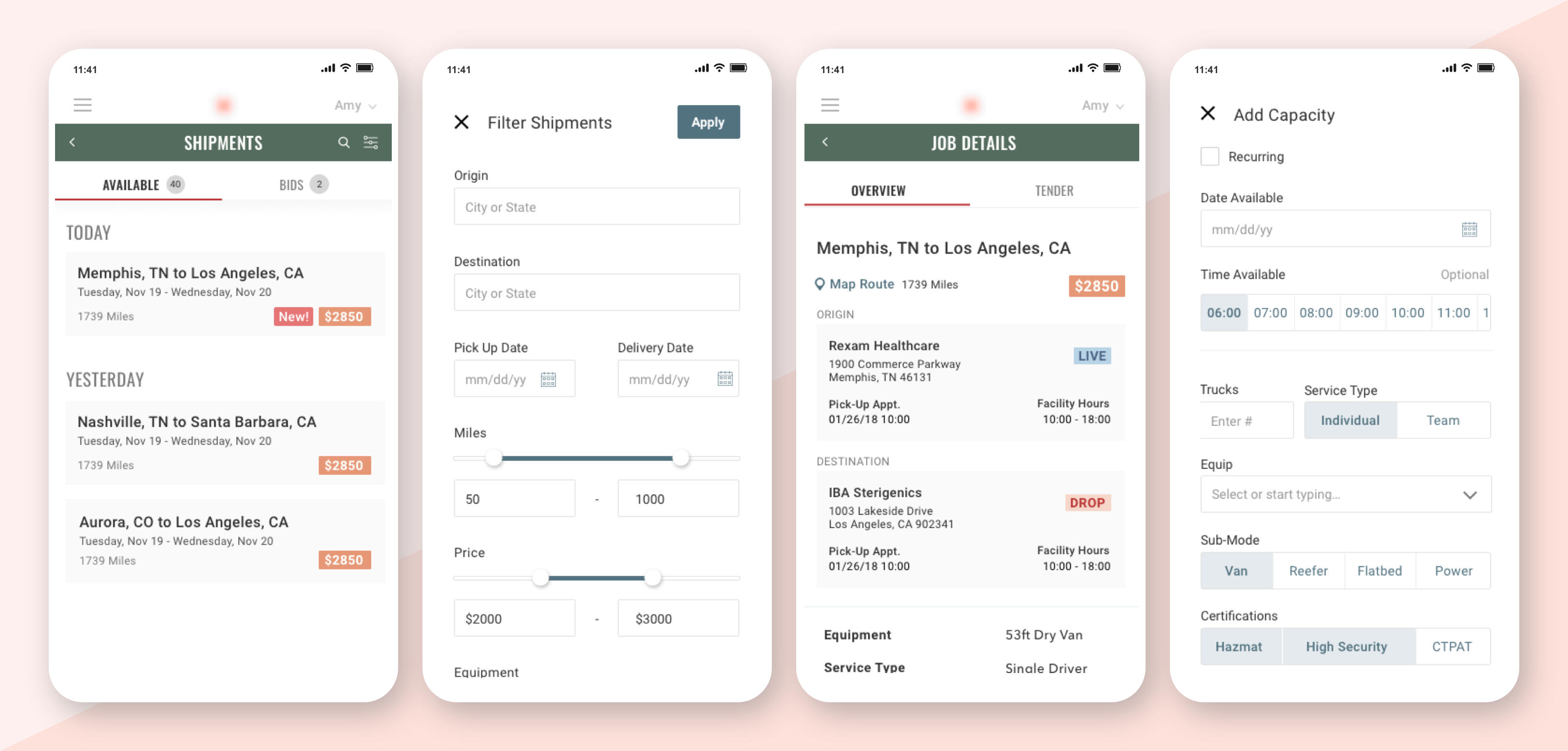

Results
- While there is still more for the client to do to remain compeitive in an ever changing space, they now have a start on revamping their product offerings and improving productivity in their business through the brokerage app MVP
- Through workshopping, we helped the client visualize where they fit competitively in the market, and gave them technical solutions for closing the gap
- The style guide created for Brokerage to be applied to other internal products the client was building